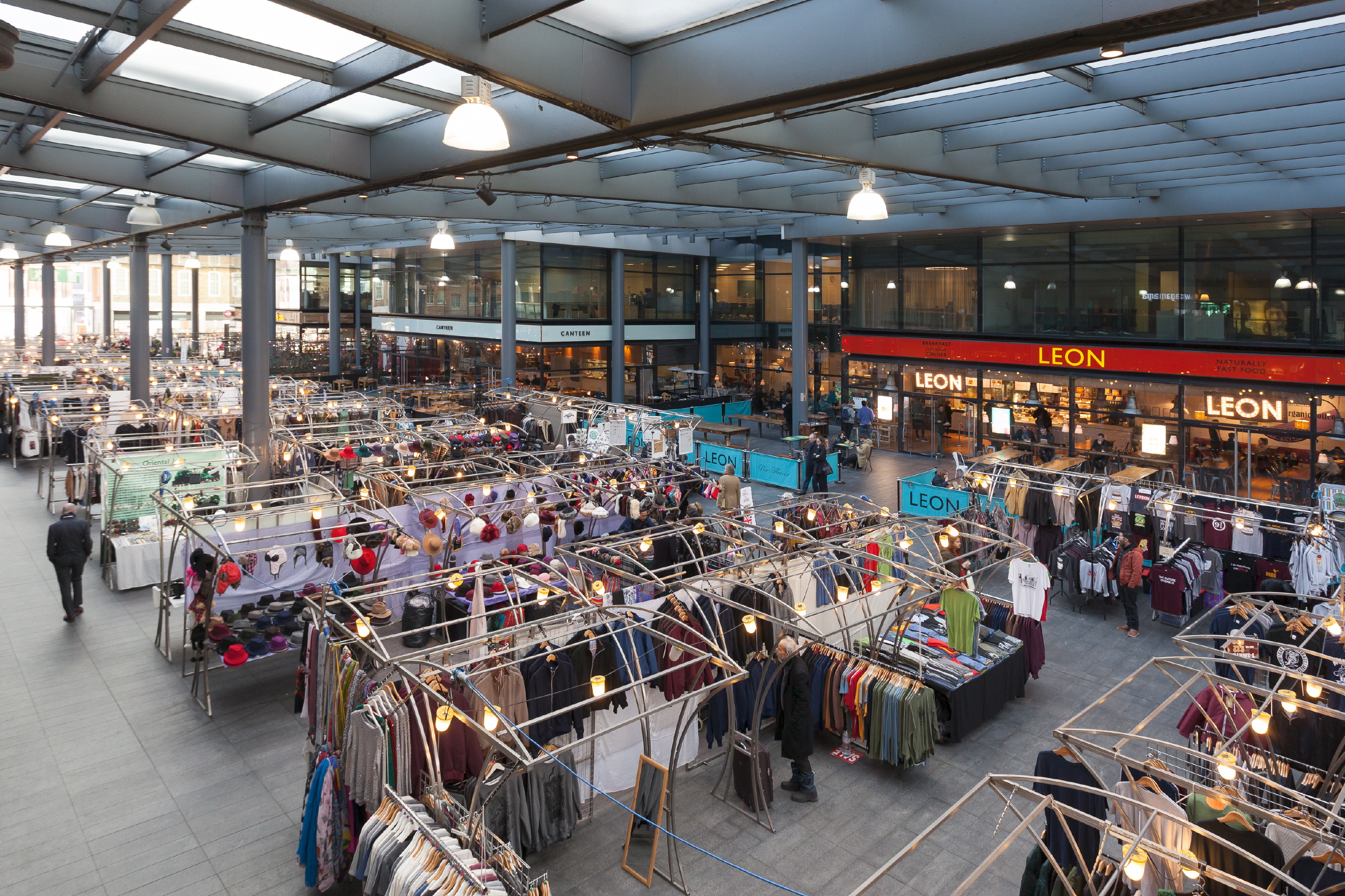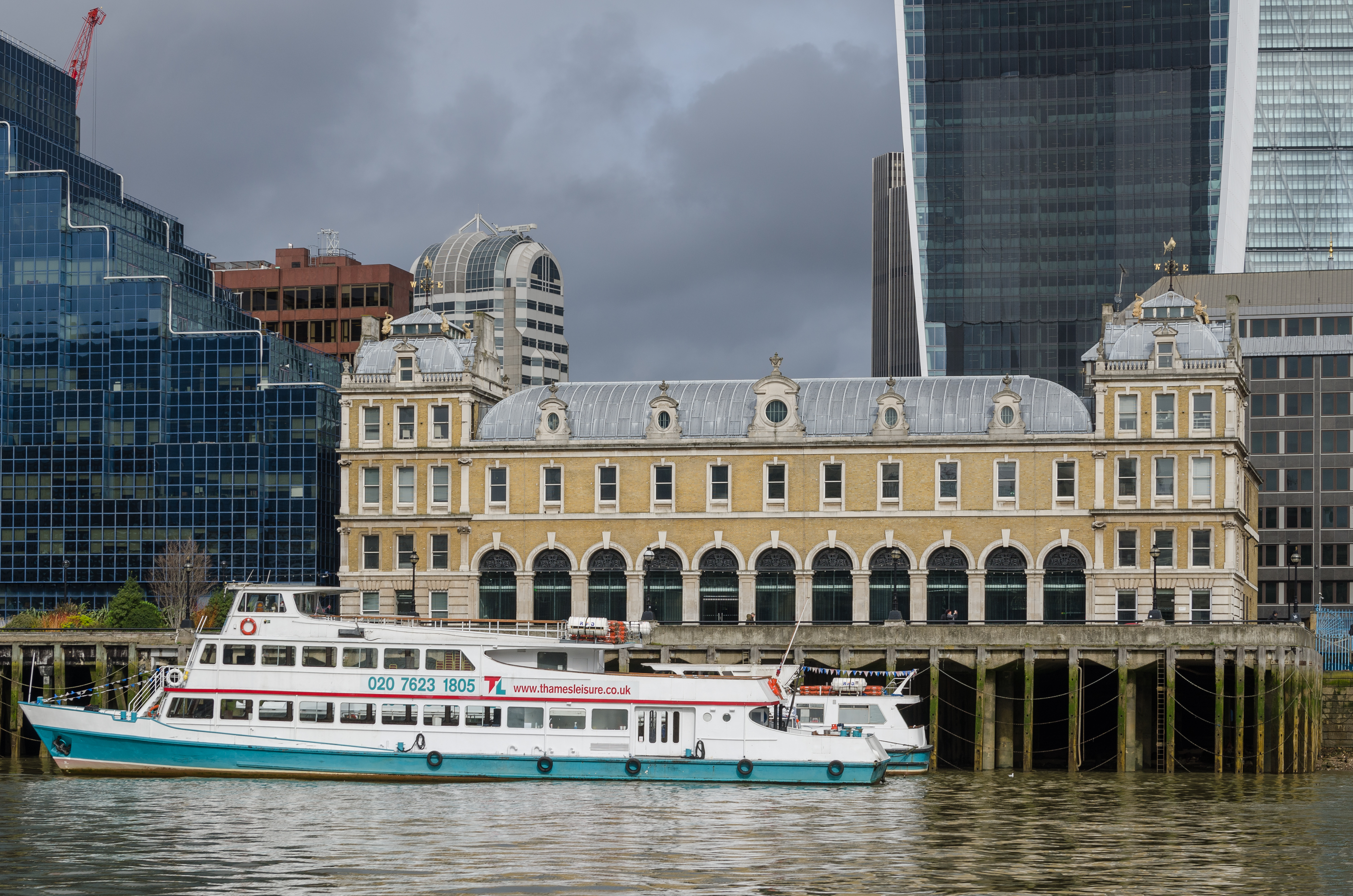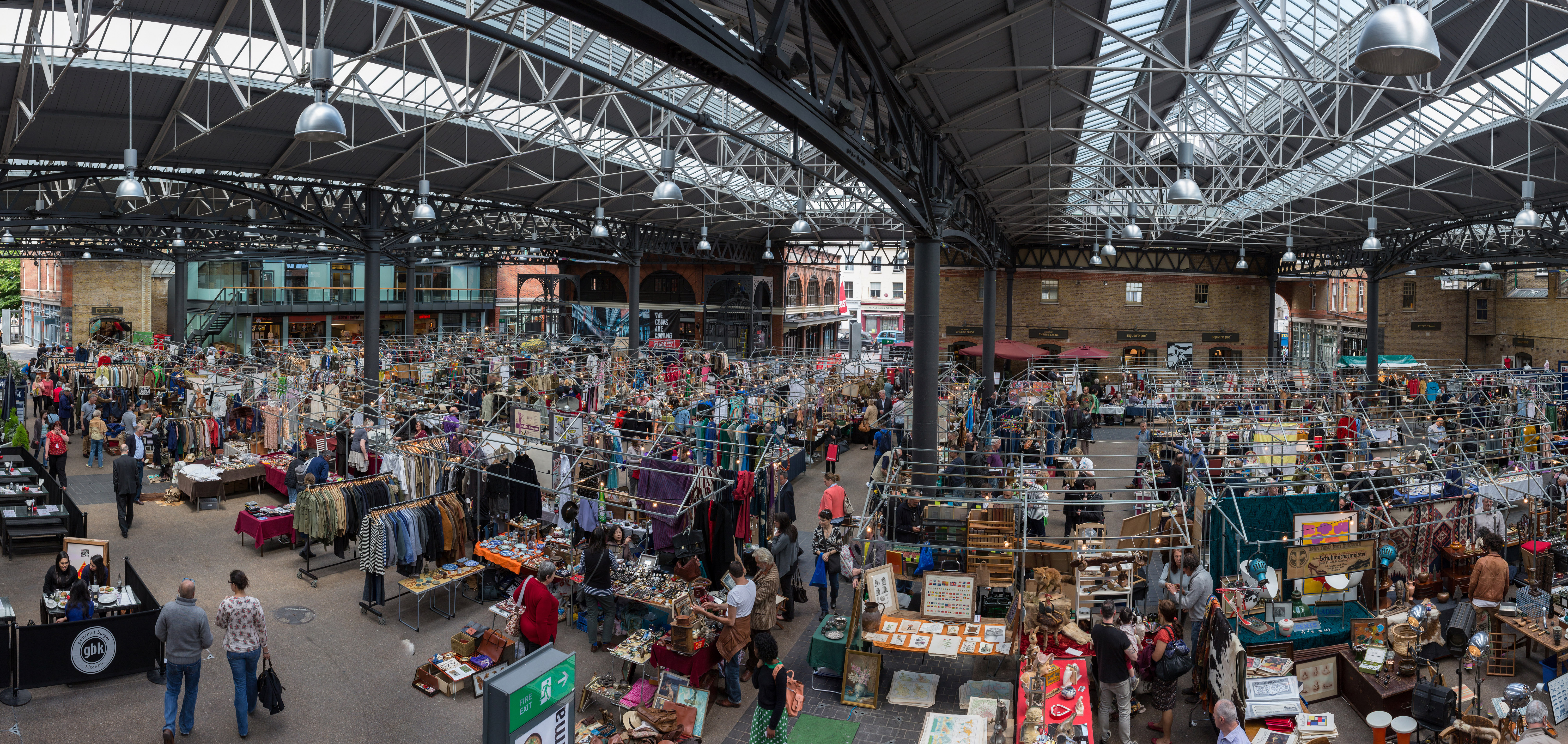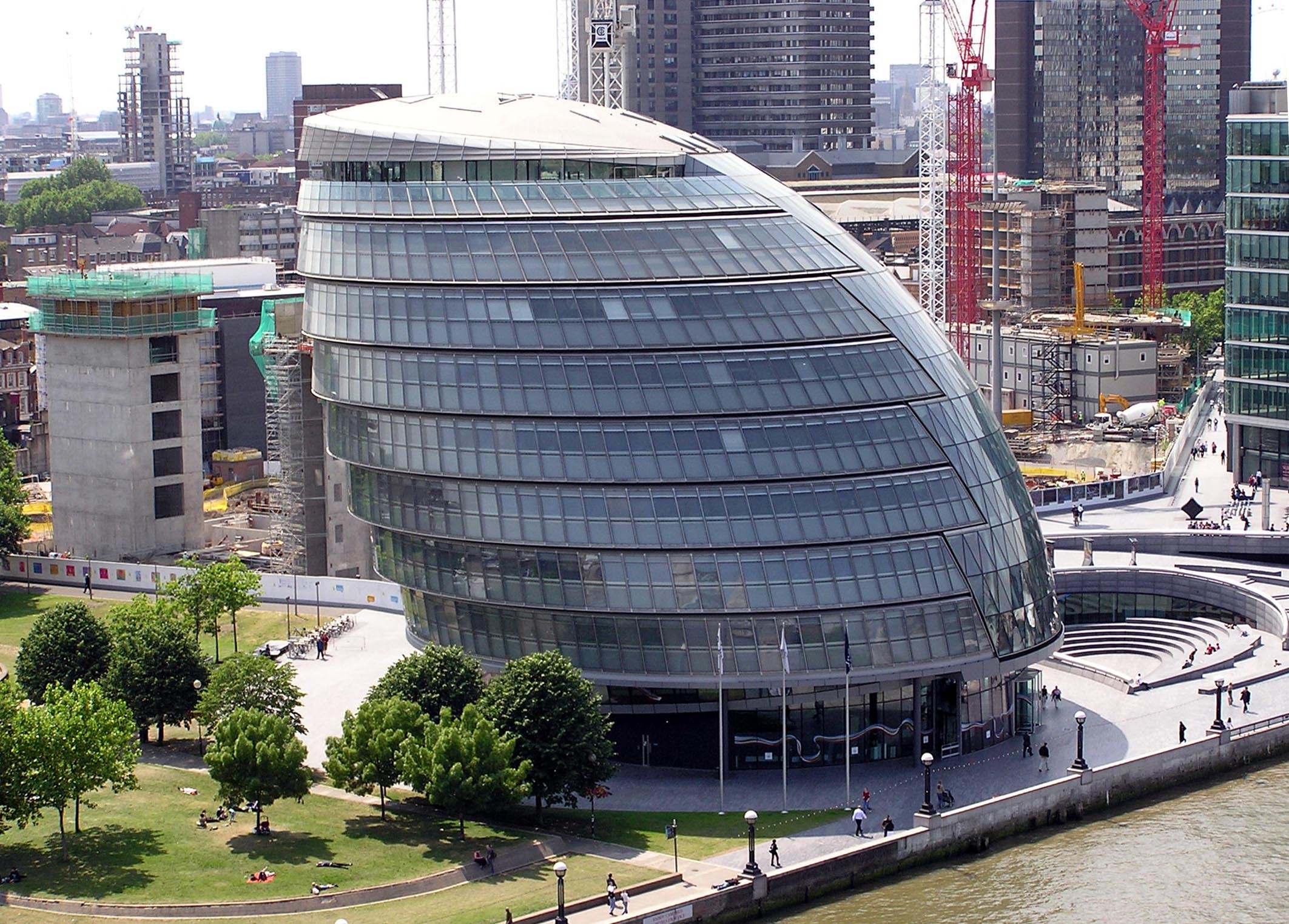|
Spitalfields Market
Spitalfields Market is a traders' market as well as a food and art market located in Spitalfields, Central London. Traders began operating around 1666, after the Great Fire of London, where the market stands today. The Spitalfields regeneration programme that ended in 2005, resulted in two new public spaces – Bishops Square and Crispin Place, which restored several historic streets and resulted in more independent retailers and restaurants. Spitalfields Market is situated in the London Borough of Tower Hamlets. It is surrounded by Lamb Street, Old Spitalfields market, Brushfield Street and Bishops Square. History Wholesale Market In 1682, King Charles II officially granted John Balch a Royal Charter allowing him to hold a market every Thursday and Saturday in Spital Square. Over time, the market became one of the main fruit and vegetable markets for London - alongside Covent Garden Market. The reputation of the market encouraged Huguenot silk weavers to settle in the ... [...More Info...] [...Related Items...] OR: [Wikipedia] [Google] [Baidu] |
Spitalfields
Spitalfields is a district in the East End of London and within the London Borough of Tower Hamlets. The area is formed around Commercial Street (on the A1202 London Inner Ring Road) and includes the locale around Brick Lane, Christ Church, Toynbee Hall and Commercial Tavern. It has several markets, including Spitalfields Market, the historic Old Spitalfields Market, Brick Lane Market and Petticoat Lane Market. It was part of the ancient parish of Stepney in the county of Middlesex and was split off as a separate parish in 1729. Just outside the City of London, the parish became part of the Metropolitan Board of Works area in 1855 as part of the Whitechapel District. It formed part of the County of London from 1889 and was part of the Metropolitan Borough of Stepney from 1900. It was abolished as a civil parish in 1921. Toponymy The name Spitalfields appears in the form ''Spittellond'' in 1399; as ''The spitel Fyeld'' on the "Woodcut" map of London of c.1561; and as ''Spy ... [...More Info...] [...Related Items...] OR: [Wikipedia] [Google] [Baidu] |
Refrigeration
The term refrigeration refers to the process of removing heat from an enclosed space or substance for the purpose of lowering the temperature.International Dictionary of Refrigeration, http://dictionary.iifiir.org/search.phpASHRAE Terminology, https://www.ashrae.org/technical-resources/free-resources/ashrae-terminology Refrigeration can be considered an artificial, or human-made, cooling method. Refrigeration refers to the process by which energy, in the form of heat, is removed from a low-temperature medium and transferred to a high-temperature medium. This work of energy transfer is traditionally driven by mechanical means, but can also be driven by heat, magnetism, electricity, laser, or other means. Refrigeration has many applications, including household refrigerators, industrial freezers, cryogenics, and air conditioning. Heat pumps may use the heat output of the refrigeration process, and also may be designed to be reversible, but are otherwise similar to air conditioning ... [...More Info...] [...Related Items...] OR: [Wikipedia] [Google] [Baidu] |
Petticoat Lane Market
Petticoat Lane Market is a fashion and clothing market in Spitalfields, London. It consists of two adjacent street markets. Wentworth Street Market is open six days a week and Middlesex Street Market is open on Sunday only. The modern market It is one of a number of traditional markets located to the east of the City of London. A few hundred yards to the north is Old Spitalfields Market, which has been refurbished, and across Commercial Street, to the east, lies Brick Lane Market. A half mile further east is the Columbia Road Flower Market. Petticoat Lane Market was not formally recognised until an Act of Parliament in 1936, but its long history as an informal market makes it possibly one of the oldest surviving markets in Britain. The market is open Monday to Friday on Wentworth Street; on Sunday it extends over many of the surrounding streets, with over a thousand stalls. It is closed on Saturday, and on Sunday closes at about 2 pm. The markets are well signed from local sta ... [...More Info...] [...Related Items...] OR: [Wikipedia] [Google] [Baidu] |
Old Billingsgate Market
Old Billingsgate Market is the name given to what is now a hospitality and events venue in the City of London, based in the Victorian architecture, Victorian building that was originally Billingsgate Fish Market, the world's largest fish market in the 19th century. The first Billingsgate Market building was constructed on Thames Street (London), Lower Thames Street in 1850 by the builder John Jay (builder), John Jay, and the fish market was moved off the streets into its new riverside building. This was demolished in around 1873 and replaced by an arcaded market hall designed by City architect Horace Jones (architect), Horace Jones and built by Mowlem, John Mowlem & Co. in 1875, the building that still stands on the site today.History of Billingsgate accessed 21 May 2007 In 1982, the ... [...More Info...] [...Related Items...] OR: [Wikipedia] [Google] [Baidu] |
Leadenhall Market
Leadenhall Market is a covered market in London, located on Gracechurch Street but with vehicular access also available via Whittington Avenue to the north and Lime Street to the south and east, and additional pedestrian access via a number of narrow passageways. It is one of the oldest markets in London, dating from the 14th century, and is located in the historic centre of the City of London financial district. History The market dates from the 14th century and is said to derive its name from ''Leather-hall'', though it is disputable. The early history of Leaden Hall involves the Mayor (1446), Simon Eyre. According to John Stow, "Eyre, a draper built Leaden Hall for a common garner of corn for the use of this city". The Market is typically open weekdays from 10 am until 6 pm, and primarily sells fresh food; among the vendors there are cheesemongers, butchers and florists. Originally a meat, game and poultry market, it stands on what was the centre of Roman London. [...More Info...] [...Related Items...] OR: [Wikipedia] [Google] [Baidu] |
Old Spitalfields Market
Old Spitalfields Market is a covered market in Spitalfields, London. There has been a market on the site for over 350 years. In 1991 it gave its name to New Spitalfields Market in Leyton, where fruit and vegetables are now traded. In 2005, a regeneration programme resulted in the new public spaces: Bishops Square and Crispin Place, which are now part of the modern Spitalfields Market. A range of public markets runs daily, with independent local stores and restaurants - as well as new office developments. It is situated in the London Borough of Tower Hamlets, just outside the City of London. The closest London Underground and mainline railway station is Liverpool Street. Historic market There has been a market on the site since 1638 when King Charles I gave a licence for flesh, fowl and roots to be sold on Spittle Fields, which was then a rural area on the eastern outskirts of London. After the rights to a market had seemingly lapsed during the time of the Commonwealth, the m ... [...More Info...] [...Related Items...] OR: [Wikipedia] [Google] [Baidu] |
Brick Lane
Brick Lane (Bengali: ব্রিক লেন) is a street in the East End of London, in the borough of Tower Hamlets. It runs from Swanfield Street in Bethnal Green in the north, crosses the Bethnal Green Road before reaching the busiest, most commercially active part which runs through Spitalfields, or along its eastern edge. Brick Lane’s southern end is connected to Whitechapel High Street by a short extension called Osborn Street. Today, it is the heart of the country's Bangladeshi community with the vicinity known to some as Banglatown. It is famous for its many curry houses. Early history 15th to 18th centuries The street was formerly known as Whitechapel Lane, and wound through fields. It derives its current name from brick and tile manufacture started in the 15th century, which used the local brick earth deposits. The street featured in the 16th-century Woodcut map of London as a partially-developed crossroad leading north from the city's most easterly edge, ... [...More Info...] [...Related Items...] OR: [Wikipedia] [Google] [Baidu] |
New Spitalfields Market
New Spitalfields Market is a fruit and vegetable market on a site in Leyton, London Borough of Waltham Forest in East London. The market is owned and administrated by the City of London Corporation. The market is Europe's leading horticultural market specialising in exotic fruit and vegetables - and the largest revenue earning wholesale market in the UK. History It had previously been located at Spitalfields Market just off Bishopsgate, on the east side of the City of London. Due to traffic congestion, lack of space for parking lorries, as well as out of date market buildings (e.g. poor refrigeration facilities) - the market was relocated out of the City in the early 1990s. This followed the move of Covent Garden Market and Billingsgate Fish Market out of the city centre. The new, purpose built location in Leyton opened in May 1991. The wholesale fruit and vegetable market at Stratford Market - founded in 1879 by the Great Eastern Railway as a competitor to Spitalfields - als ... [...More Info...] [...Related Items...] OR: [Wikipedia] [Google] [Baidu] |
Leyton
Leyton () is a town in east London, England, within the London Borough of Waltham Forest. It borders Walthamstow to the north, Leytonstone to the east, and Stratford to the south, with Clapton, Hackney Wick and Homerton, across the River Lea, to the west. The area includes New Spitalfields Market, Leyton Orient Football Club, as well as part of the Queen Elizabeth Olympic Park. The town consists largely of terraced houses built between 1870 and 1910, interspersed with some modern housing estates. It is north-east of Charing Cross. It was originally part of the ancient parish of Leyton St Mary in the Becontree hundred and part of historic county of Essex. The town expanded rapidly in the late 19th century, forming part of the conurbation of London and becoming a suburb, similar to much of south-west Essex. It became part of the Metropolitan Police District in 1839 and has been part of the London postal district since its inception in 1856. The parish became an urban dis ... [...More Info...] [...Related Items...] OR: [Wikipedia] [Google] [Baidu] |
Billingsgate Fish Market
Billingsgate Fish Market is located in Canary Wharf in London. It is the United Kingdom's largest inland fish market. It takes its name from Billingsgate, a ward in the south-east corner of the City of London, where the riverside market was originally established. In its original location in the 19th century, Billingsgate was the largest fish market in the world. History City of London Billingsgate Wharf, close to Thames Street (London), Lower Thames Street, became the centre of a fish market during the 16th and 17th centuries but did not become formally established until an Act of Parliament in 1699. In 1850, the market, according to Horace Jones, "consisted only of shed buildings ... The open space on the north of the well-remembered Billingsgate Dock was dotted with low booths and sheds, with a range of wooden houses with a piazza in front on the west, which served the salesmen and fishmongers as shelter, and for the purposes of carrying on their trade." In that year the ma ... [...More Info...] [...Related Items...] OR: [Wikipedia] [Google] [Baidu] |
New Covent Garden Market
New Covent Garden Market in Nine Elms, London, is the largest wholesale fruit, vegetable and flower market in the United Kingdom. It covers a site of and is home to about 200 fruit, vegetable and flower companies. The market serves 40% of the fruit and vegetables eaten outside of the home in London, and provides ingredients to many of London's restaurants, hotels, schools, prisons, hospitals and catering businesses. The Flower Market, which offers flowers, plants, foliages, sundries and interior decorations from the UK and from around the globe, is visited by 75% of florists in London, many of whom place morning orders and return to restock during the day. The Flower Market wholesalers are open from 04:00 to 10:00 Monday to Saturday and the Fruit & Vegetable Market wholesalers trade from around 00:00 – 06:00 Monday to Saturday. There is a £5 entry fee for visitors driving to the market. The nearest London Underground stations are Battersea Power Station and Nine Elms, both ... [...More Info...] [...Related Items...] OR: [Wikipedia] [Google] [Baidu] |
Greater London Authority
The Greater London Authority (GLA), colloquially known by the metonym "City Hall", is the devolved regional governance body of Greater London. It consists of two political branches: the executive Mayoralty (currently led by Sadiq Khan) and the 25-member London Assembly, which serves as a means of checks and balances on the former. Since May 2016, both branches have been under the control of the London Labour Party. The authority was established in 2000, following a local referendum, and derives most of its powers from the Greater London Authority Act 1999 and the Greater London Authority Act 2007. It is a strategic regional authority, with powers over transport, policing, economic development, and fire and emergency planning. Three functional bodies— Transport for London, the Mayor's Office for Policing and Crime, and the London Fire Commissioner—are responsible for delivery of services in these areas. The planning policies of the Mayor of London are detailed in a statuto ... [...More Info...] [...Related Items...] OR: [Wikipedia] [Google] [Baidu] |









